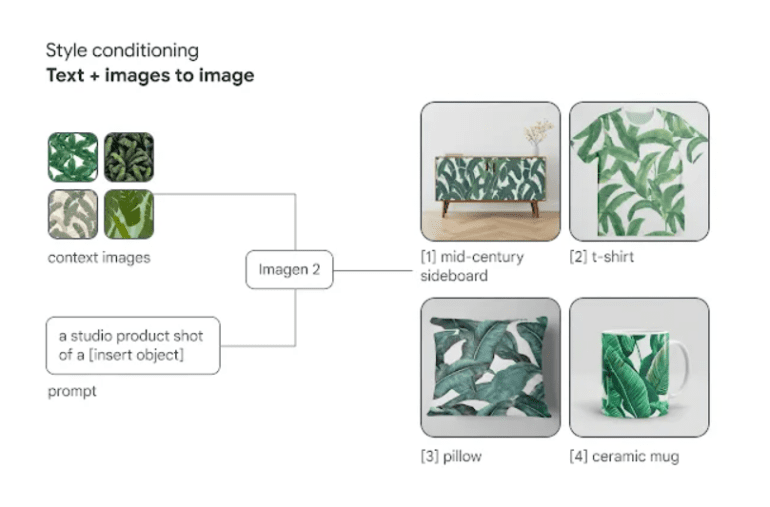TL;DR:
- Imagen 2 by Google DeepMind is a revolutionary text-to-image diffusion technology.
- It refines random images based on text prompts, producing highly realistic results.
- Inpainting and outpainting features enhance its versatility for various applications.
- Diffusion-based techniques provide flexibility and style consistency across images.
- Imagen 2’s enriched dataset and aesthetic scoring model improve detail and aesthetics.
- Integration with Google Cloud Vertex AI and Google Arts & Culture expands accessibility.
Main AI News:
In the world of generative models, text-to-image diffusion models have long been a source of fascination and innovation. These models possess the remarkable ability to craft visual masterpieces from mere textual prompts. At the heart of this technological marvel lies a diffusion model, which, starting from a random image canvas, meticulously refines it, word by word, in harmony with the given textual directive. This intricate dance involves the careful addition and subtraction of nuances, guiding the image toward its ultimate form, a faithful representation of the textual description.
Enter Imagen 2, the latest game-changing creation from the minds at Google DeepMind. This groundbreaking text-to-image diffusion technology is poised to redefine the boundaries of what’s possible. Imagen 2 empowers users to conjure astonishingly lifelike, intricately detailed images that seamlessly align with the text’s narrative. Google DeepMind proudly proclaims it as their most advanced text-to-image diffusion technology to date, complete with awe-inspiring inpainting and outpainting capabilities.
In the realm of creativity, Imagen 2’s inpainting functionality stands as a testament to its versatility. It allows users to infuse new content into existing images without a single ripple of disruption to the established style. Conversely, the outpainting feature empowers users to expand the canvas, providing room for additional context and storytelling. These remarkable attributes transform Imagen 2 into a flexible tool, equally proficient in the realms of scientific exploration and artistic expression.
Setting itself apart from its predecessors and contemporaries, Imagen 2 leverages diffusion-based techniques. This approach affords unparalleled flexibility in image generation and control. With Imagen 2, users can effortlessly merge a textual prompt with one or multiple reference style images. The result? Imagen 2’s uncanny ability to seamlessly imbue the generated output with the desired style ensures visual consistency across multiple images—a boon for photographers and content creators alike.
Traditionally, text-to-image models struggled with maintaining intricate details and precision, often falling short due to a lack of data or imprecise associations. Imagen 2 addresses this challenge head-on with its comprehensive training dataset, enriched with detailed image captions. This rich resource enables the model to comprehend various captioning styles and generalize its understanding to cater to diverse user prompts. Imagen 2’s architectural design and thoughtfully curated dataset collectively tackle the common pitfalls encountered by text-to-image techniques.
But that’s not all. The Imagen 2 development team has taken aesthetics to heart, introducing an aesthetic scoring model. This model considers factors such as human lighting preferences, composition, exposure, and focus. Each image within the training dataset receives a unique aesthetic score, shaping its probability of selection in subsequent iterations. The result? A finely tuned, visually pleasing output that effortlessly captures the eye.
In a strategic move to democratize access, Google DeepMind introduces the Imagen API within Google Cloud Vertex AI. This development opens the door for cloud service clients and developers to harness the power of Imagen 2, further expanding its potential applications.
Furthermore, Google DeepMind forges a promising partnership with Google Arts & Culture, integrating Imagen 2 into their Cultural Icons interactive learning platform. This collaboration allows users to engage with historical personalities through AI-powered immersive experiences, breathing new life into the study of culture and history.
Conclusion:
Imagen 2 emerges as a groundbreaking force in the realm of text-to-image diffusion technology, setting new standards for realism, creativity, and accessibility. Its fusion of cutting-edge techniques, comprehensive datasets, and aesthetic sensibilities marks a significant leap forward in the world of generative models. As Imagen 2 paves the way for a more visually expressive future, the possibilities seem limitless, and the canvas of imagination stretches farther than ever before.

